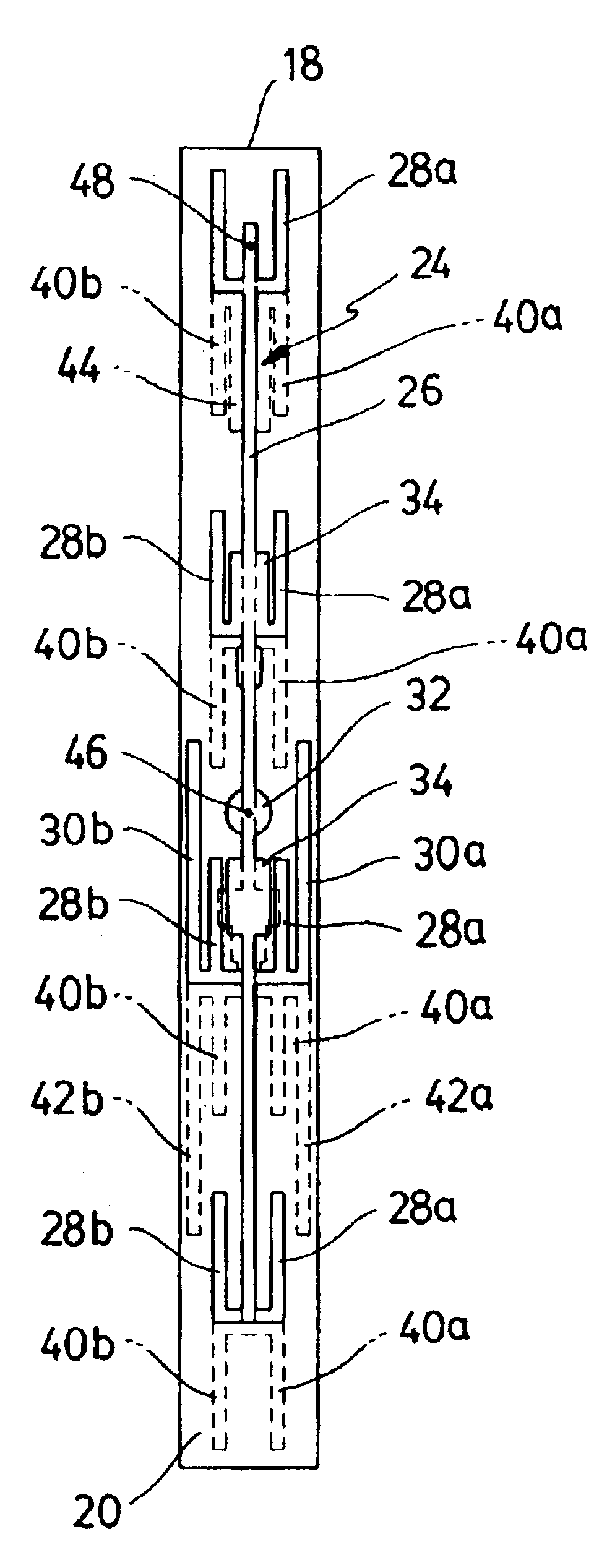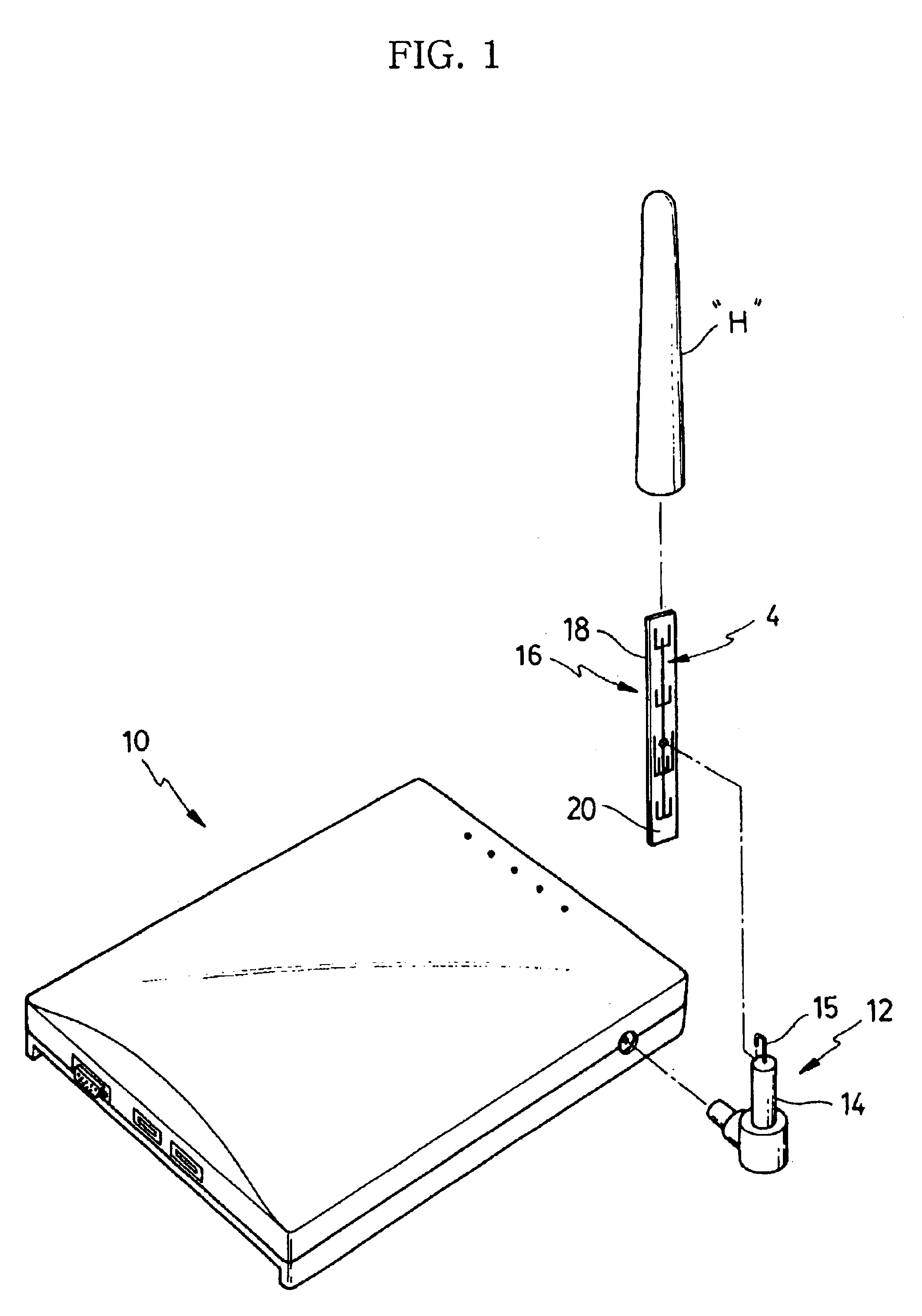Dual-band omnidirectional antenna for wireless local area network
a wireless local area network and omnidirectional antenna technology, applied in the direction of individual energised antenna arrays, resonant antennas, radiating element structural forms, etc., can solve the problems of increased installation costs, increased installation costs, and increased installation costs, so as to achieve effective operation
- Summary
- Abstract
- Description
- Claims
- Application Information
AI Technical Summary
Benefits of technology
Problems solved by technology
Method used
Image
Examples
Embodiment Construction
FIG. 1 shows a wireless communication device 10 using an antenna 16 according to the present invention. A wireless LAN system comprises a computer, a printer and other devices having LAN functions, as well as the wireless communication device 10. FIG. 1 illustrates that the antenna 16 is installed outside the wireless communication device 10 and is protected by a housing H. However, the antenna 16 is planar and can be miniaturized, so it can be installed within the wireless communication device 10.
The antenna 16 comprises a dielectric substrate 18 with front and rear surfaces on which conductive patterns 24 and 36 can be arranged, respectively. The dielectric substrate 18 has a relative dielectric constant of 1 to 10, preferably, 4.5, and has a predetermined Thickness, preferably, a value of 1.5 to 2.5 mm. The substrate 18 can be characterized in that it is planar and has a front surface 20 and a rear surface 22 which are actually parallel with each other and on which the conductive...
PUM
 Login to View More
Login to View More Abstract
Description
Claims
Application Information
 Login to View More
Login to View More - R&D
- Intellectual Property
- Life Sciences
- Materials
- Tech Scout
- Unparalleled Data Quality
- Higher Quality Content
- 60% Fewer Hallucinations
Browse by: Latest US Patents, China's latest patents, Technical Efficacy Thesaurus, Application Domain, Technology Topic, Popular Technical Reports.
© 2025 PatSnap. All rights reserved.Legal|Privacy policy|Modern Slavery Act Transparency Statement|Sitemap|About US| Contact US: help@patsnap.com



